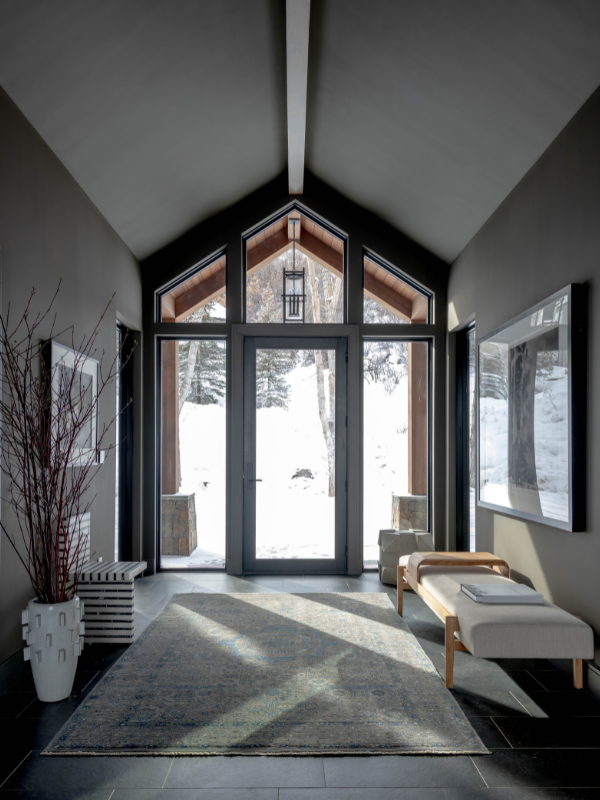We have all heard the phrase, “You can’t make a second first impression.” Nowhere is that adage truer than in the entryway of a home, especially when welcoming new in-laws, colleagues, or fast friends.
The entryway is the introduction to your home. It does quiet (during the holidays, not quite so quiet) yet essential work. People step in, shrug off their coats, pause, and read the space in a second or two. Light, surface, scale, color palette, material use… we register those quickly upon entering the home. During the holidays, the stakes are naturally a bit higher.
There are more arrivals, more noise, and more movement. Given that, how do you keep the threshold to your home calm and inviting without turning it into a stage? This isn’t a presentation or a performance. This is where you really live! A well-planned entryway will absorb that crazed holiday energy without feeling chaotic.
From thinking in layers (textiles, lighting, etc.) to styling seasonally, here’s how to amplify that introductory moment.
How to Edit Your Entryway for Holiday Entertaining
Assess the Architecture First
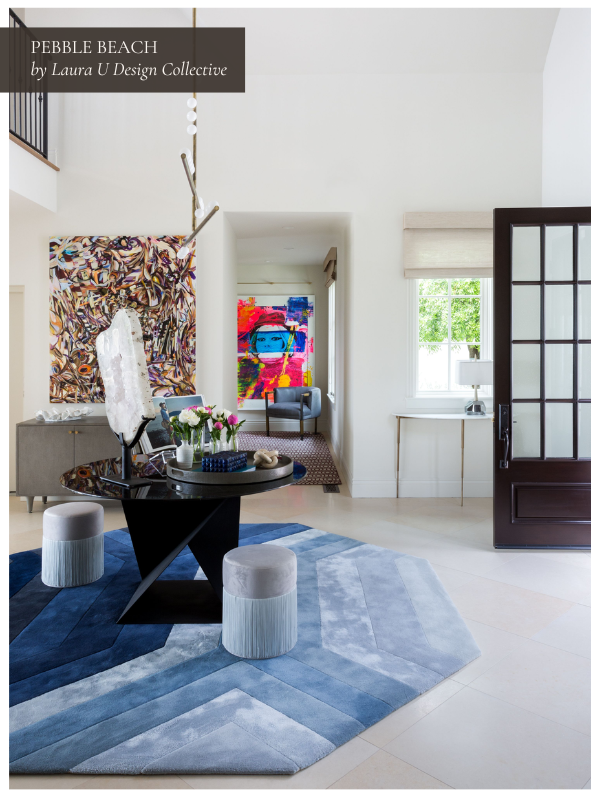
Before you pick a paint color or cart home a console, assess the architecture of your entryway. Is there a strong axial view into a living room? A curved staircase that deserves every guest’s attention? A low ceiling that needs soft, upward light? Shape, height, and circulation will direct your design choices.
We often stand in the doorway at late afternoon, which is when shadows lengthen and the floor finish is most apparent. That’s when the geometry of your entryway’s architecture is also easiest to see. If the front door opens into a narrow hallway, keep it simple. A slim rug can help define where people stop to take off their shoes or set down a bag. It also makes the space feel more intentional, not like a pass-through. You don’t want guests to feel like the space dead-ends immediately upon entry.
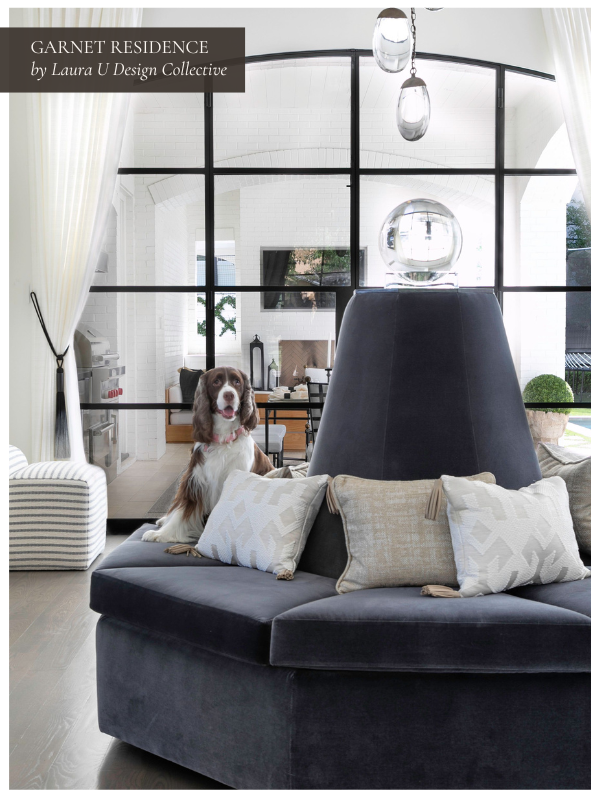
In a larger foyer, one piece with presence like a round table, a bench, or even a pendant gives the room a clear focal point so it doesn’t feel like an enormous expanse of empty floor. This is especially important in more open concept interiors, where the foyer bleeds into the living areas. Nowhere is this better executed than in our Pebble Beach and Garnet Residence projects.
Get Storage Under Control
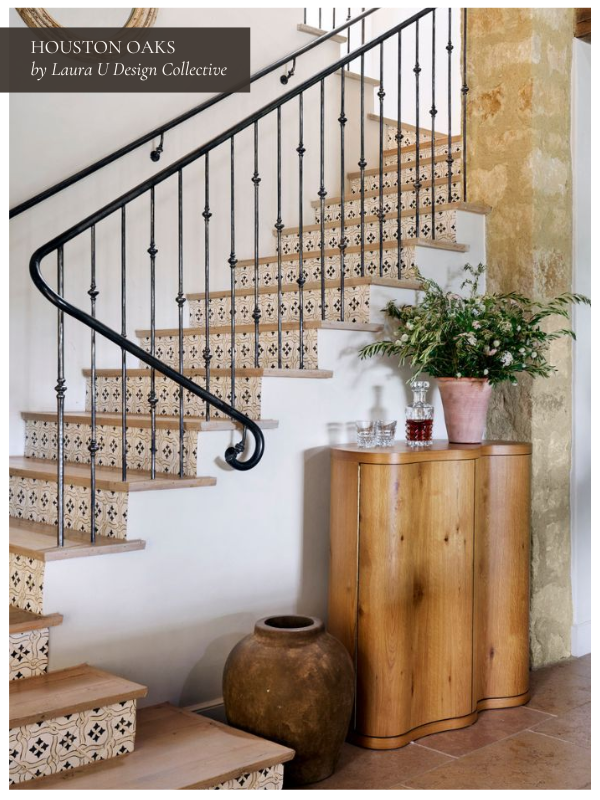
Naturally, the entryway collects things like coats, shoes, mail, and the leash you swore you’d hang up. When editing your entryway, the goal isn’t to hide everything but to give each item a place that makes sense. Closed storage tamps visual noise down.
A narrow cabinet or built-in bench with drawers can give you a lot more opportunities than an open console. Hooks can stay, but they should be deliberate and minimal because the tend to accumulate countless clothing items. Keep what you use every day and move the rest out of sight. The space will immediately feel calmer and you’ll have a lot less to do before guests walk in.
Plan for How People Actually Move Around
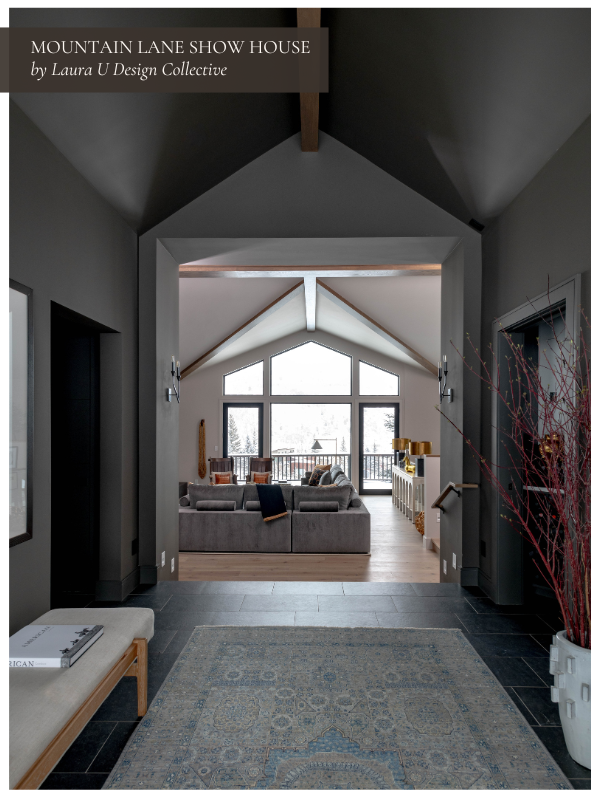
Watch how people use the space. Do they step straight through to the kitchen? Stop to remove shoes? Hand off coats? The layout should anticipate that pattern. Leave enough clearance for doors to open fully and for at least two people to pass without sidestepping.
In tighter entries, small choices like a rug runner aligned with the door or a bench pulled slightly off the wall can guide the flow of guests naturally. In open foyers, use furniture placement or lighting to direct movement toward the next room. Good circulation will feel natural and effortless instead of forced.
Be Courteous If You’re a “Shoes Off” Household
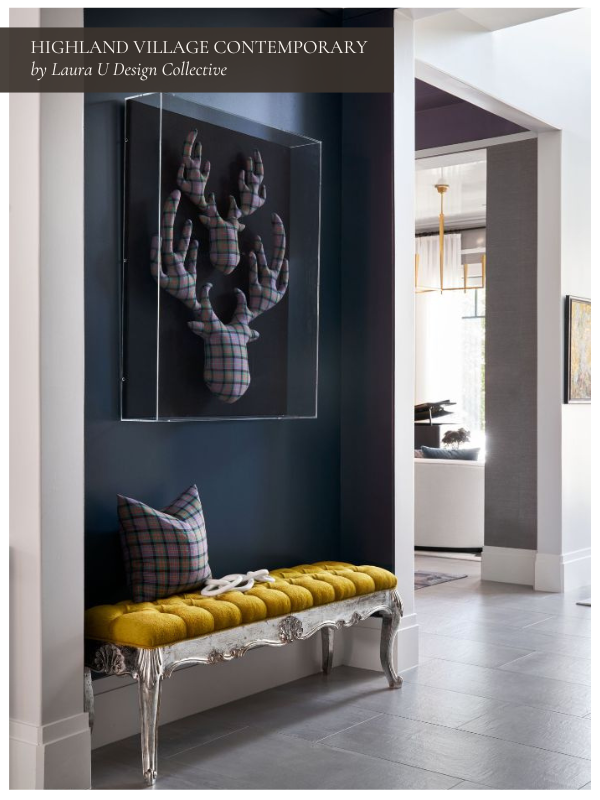
If you’re a shoes-off household, plan for it. A bench near the door might be a simple gesture, but it changes how people manage once they’re in the space. No one wants to wobble on one leg while juggling a handbag, a hostess gift, and one high heel. Give them somewhere stable to sit so they can take their time and remove footwear safely.
The placement of that bench matters. It should sit close enough to the door that removing shoes feels natural (not like a detour) but far enough that the entry doesn’t get crowded. Upholstered benches work well here because they feel softer and more deliberate than a utility piece. In our Highland Village Contemporary project, the tufted bench is tucked into a niche, out of the traffic path but right where people need it.
Don’t forget to make space for the shoes themselves, whether that’s a cabinet or an area tucked under the bench itself.
Layer Lighting Thoughtfully
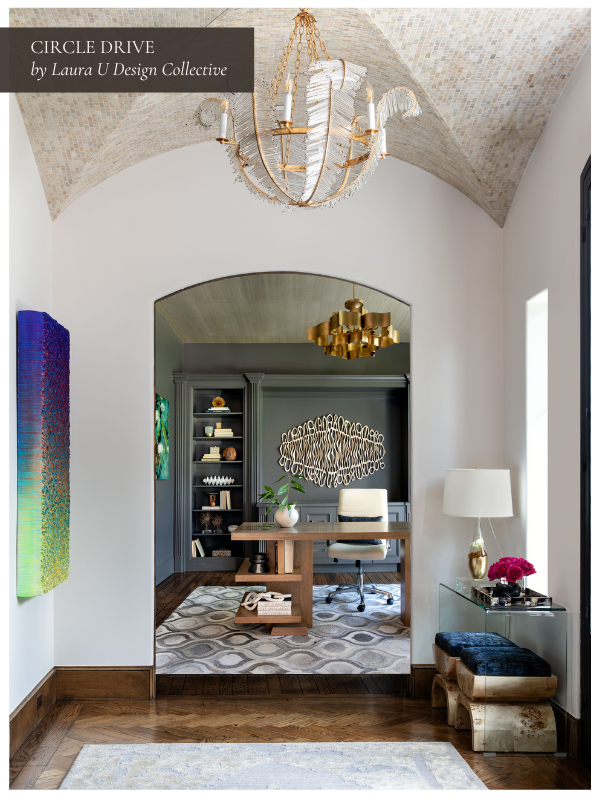
Good lighting matters in an entryway more than most rooms. It’s the first thing people register when they step inside, often before they even look down. Overhead fixtures create the architecture of the light, but they can’t do all of that important work alone. A single pendant or chandelier sets the tone of the space, but layering in sconces or a small table lamp near the door softens everything and makes the space feel considered.
Placement and intensity are as important as the fixture itself. Overhead light should be warm enough to feel inviting without flattening the room. A lamp at eye level helps pull the light down, which instantly makes even tall spaces feel more comfortable. Dimmers are worth the effort and expense because they allow the lighting to adjust with the time of day and the kind of gathering.
In our Circle Drive project, a statement chandelier hangs high, but it’s balanced by the gentle wash of light from a nearby table lamp. That combination gives the room shape and keeps the atmosphere from turning too formal. Think of lighting less as decoration and more as how people experience the room.
If you lack space for layered lighting, consider pulling it from the outdoors with a skylight, as Kate McGregor recommends in this article for House Beautiful.
Add Warmth and Depth to the Space Through Varied Texture
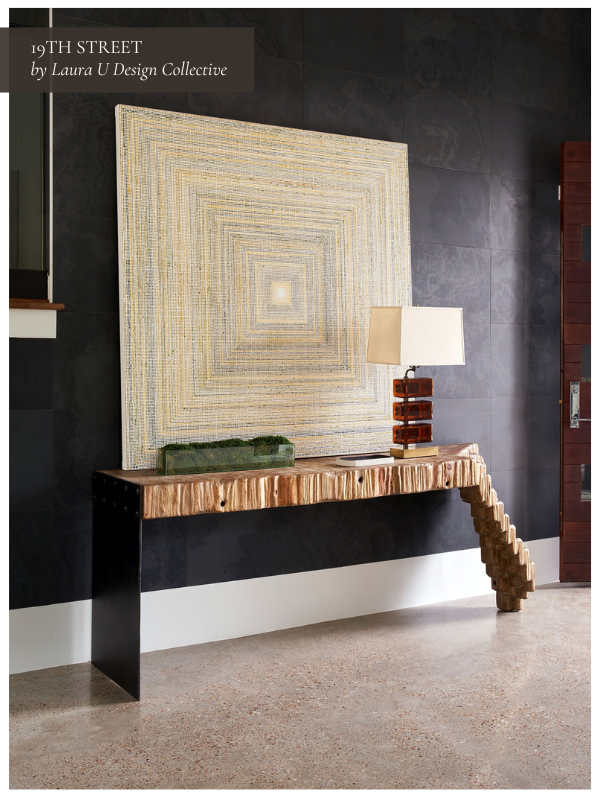
Texture is absolutely essential in an entryway. It’s what keeps the space from feeling flat or underdressed, especially in rooms that don’t have much furniture. A well-chosen rug, a grasscloth wallcovering, or the subtle grain of natural wood underfoot can bring warmth and dimension without shouting at your guests for attention. These layers create a backdrop that doesn’t demand to be noticed but makes everything else in the space feel more intentional.
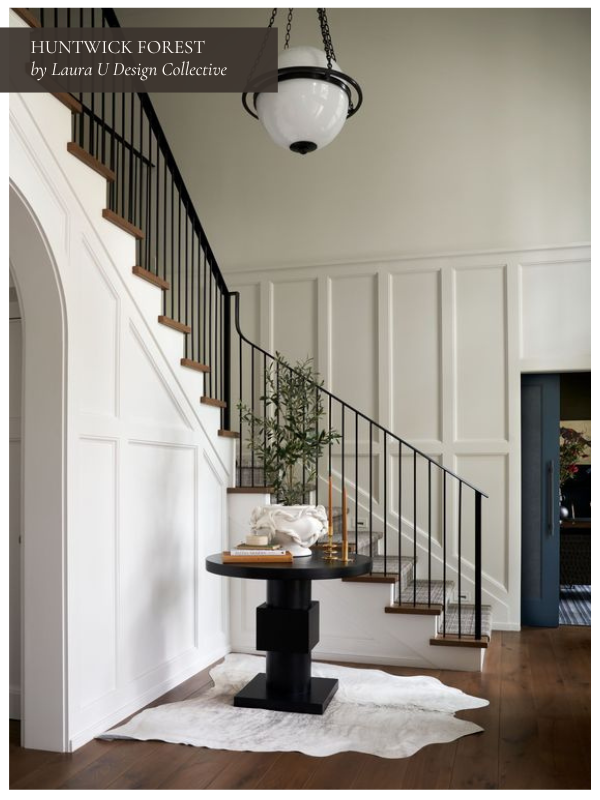
Hard surfaces are often unavoidable in entries (think tile, stone, millwork), but they don’t need to dominate. A soft runner will temper the sound of footsteps. A woven basket by the door absorbs visual clutter in a way a metal bin never could. Even a single textile, like a pillow on a bench, can take the edge off a space that leans too hard on clean lines and smooth finishes.
The key here is variation. Too many glossy surfaces and the entry starts to feel cold. Too many soft ones and it loses much-needed structure. A balance of textures makes the space inviting in a way that color alone can’t.
Define a Focal Point with a Monumental Artwork
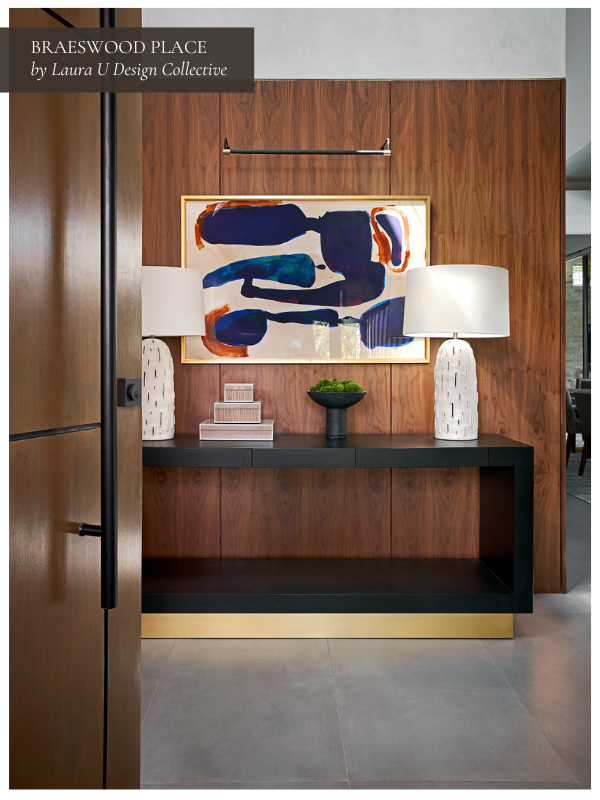
An entryway doesn’t need layers of furniture or elaborate styling to feel finished. Often, one strong focal point is enough. A single oversized artwork can shape the way the space is read in the first few seconds after someone steps inside. It gives the eye somewhere specific to land and sets the tone for what follows.
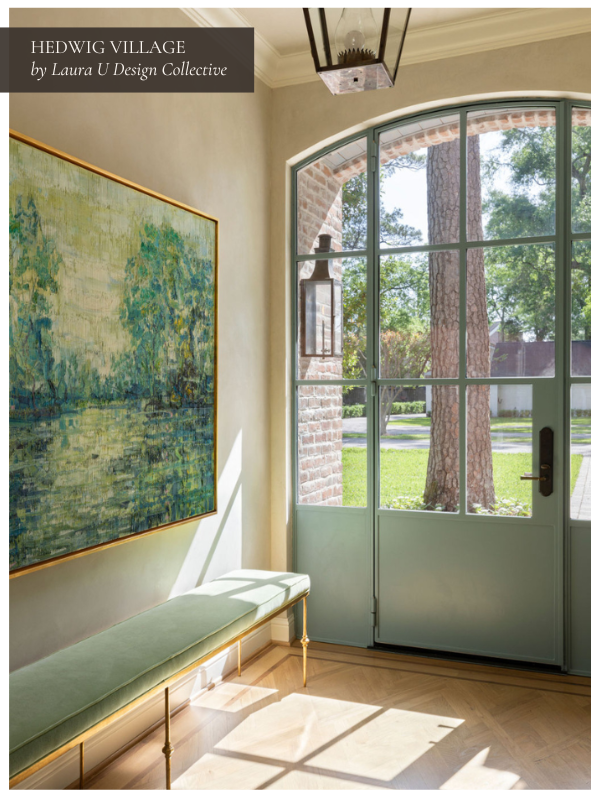
The scale of the piece matters. Oversized canvases, textured installations, or sculptural reliefs work especially well in transitional spaces like entries because they create impact without taking up floor space. In Hedwig Village, a landscape painting in soft greens and blues reflects the light pouring through the glass door, so the entire room feels connected to the outdoors. At Circle Drive, a contemporary canvas in saturated colors draws the eye through the archway and into the heart of the home.
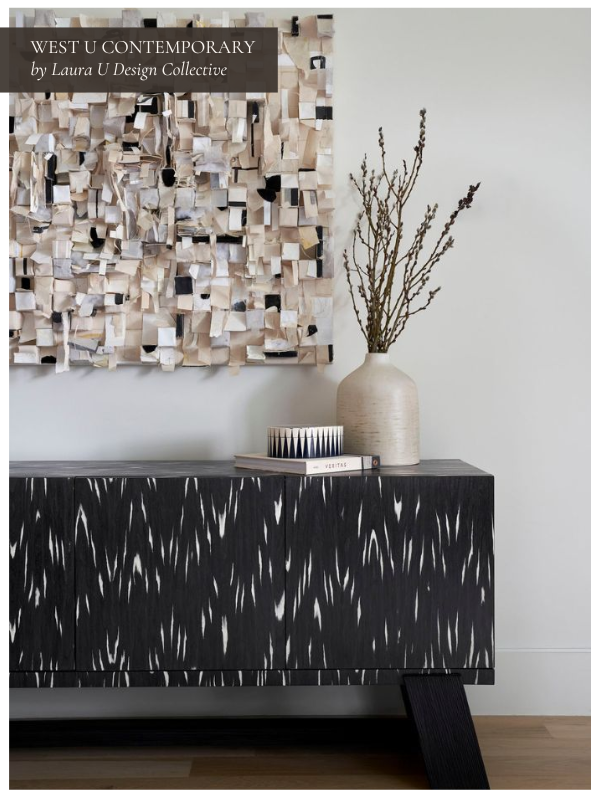
At West U Contemporary, a textural assemblage adds depth and shadow to an otherwise minimal space; it proves that impact doesn’t have to mean bold color. And in Braeswood Place, a vivid abstract is the centerpiece of a warm wood-paneled wall, where it helps balance clean architectural lines with something a bit more expressive. These moments are deliberate. In an entryway, one strong piece says more than a busy gallery wall ever could.
Embrace Seasonal Styling with Restraint
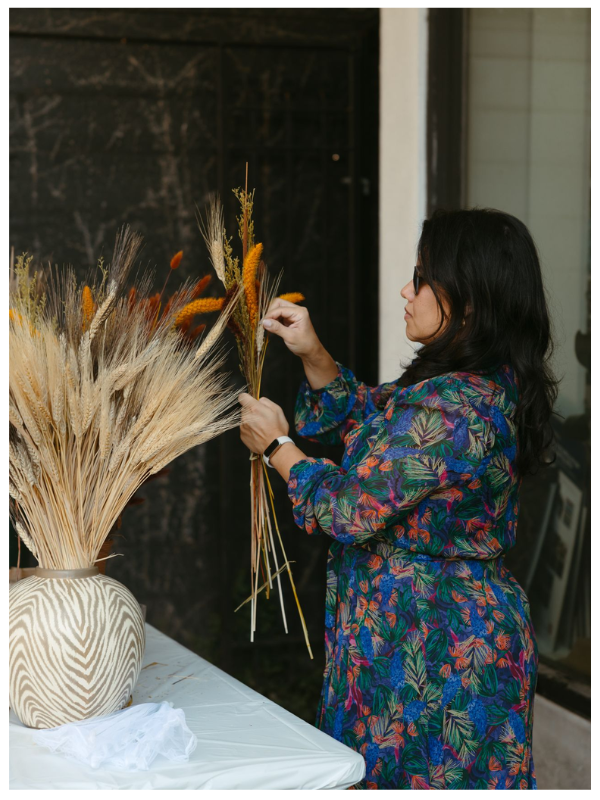
Seasonal styling works best when it feels integrated instead of layered on top. A few deliberate changes can shift the atmosphere of an entryway without turning it into a holiday display. Your goal should be to build on the existing architecture and finishes, not to disguise them.
Textiles are often the easiest way to signal the change in season. A richer rug underfoot, a velvet pillow on the bench, or a wool throw folded neatly on a chair can make the space feel warmer without overwhelming it. Greenery achieves a similar result. A simple wreath, a tall branch arrangement, or a cluster of magnolia leaves can create that seasonal feel without adding too much visual noise.
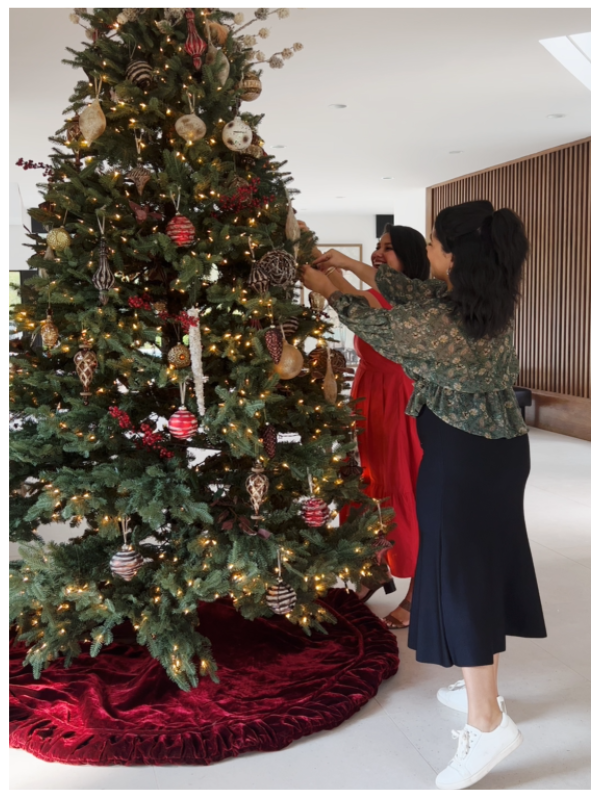
You don’t have to go all out with a full Christmas tree, as seen above. Smaller gestures are typically more effective in an entryway. We love the ease and beauty of seasonal floral arrangements, like the one our COO Melissa Grove is creating at the top of this section. They’re elegant, flexible, and easy to adapt as the season shifts.
Scent helps too. A subtle candle, cedar boughs tucked near the door, or a soft citrus note can make the space feel grounded in the time of year. It doesn’t need to be loud to be memorable. The best seasonal styling enhances what’s already there. When everything comes down in January, the entry still feels complete and you don’t have much to put away!
Create Spaces That Adapt With the Seasons

If you want your home to feel like the place everyone wants to gather, work with Laura U Design Collective to create spaces that adapt with the seasons while making entertaining more effortless. Thoughtful design can carry the energy of a home through every celebration, every intimate moment, and every season in between. Reach out to our team to start a conversation.


